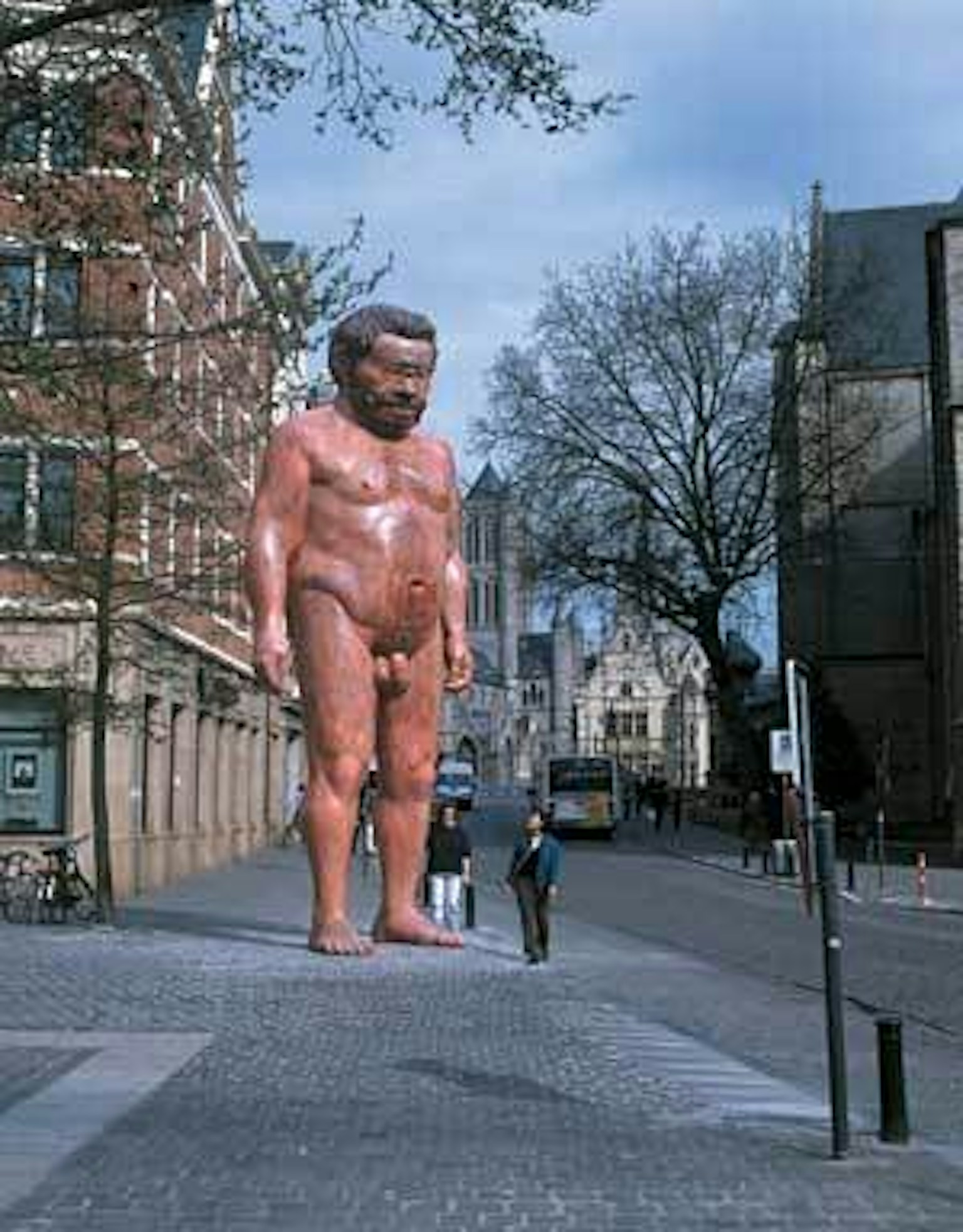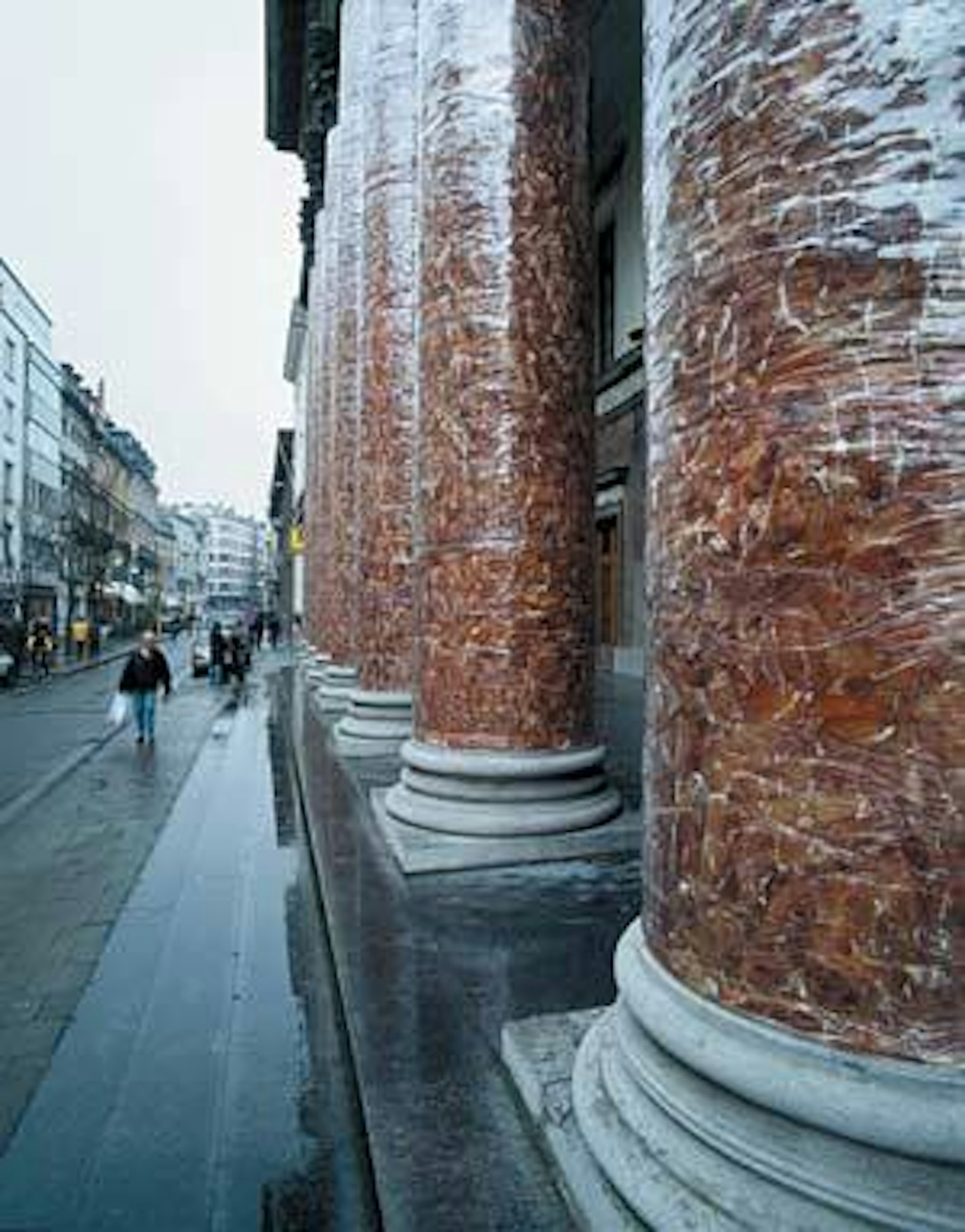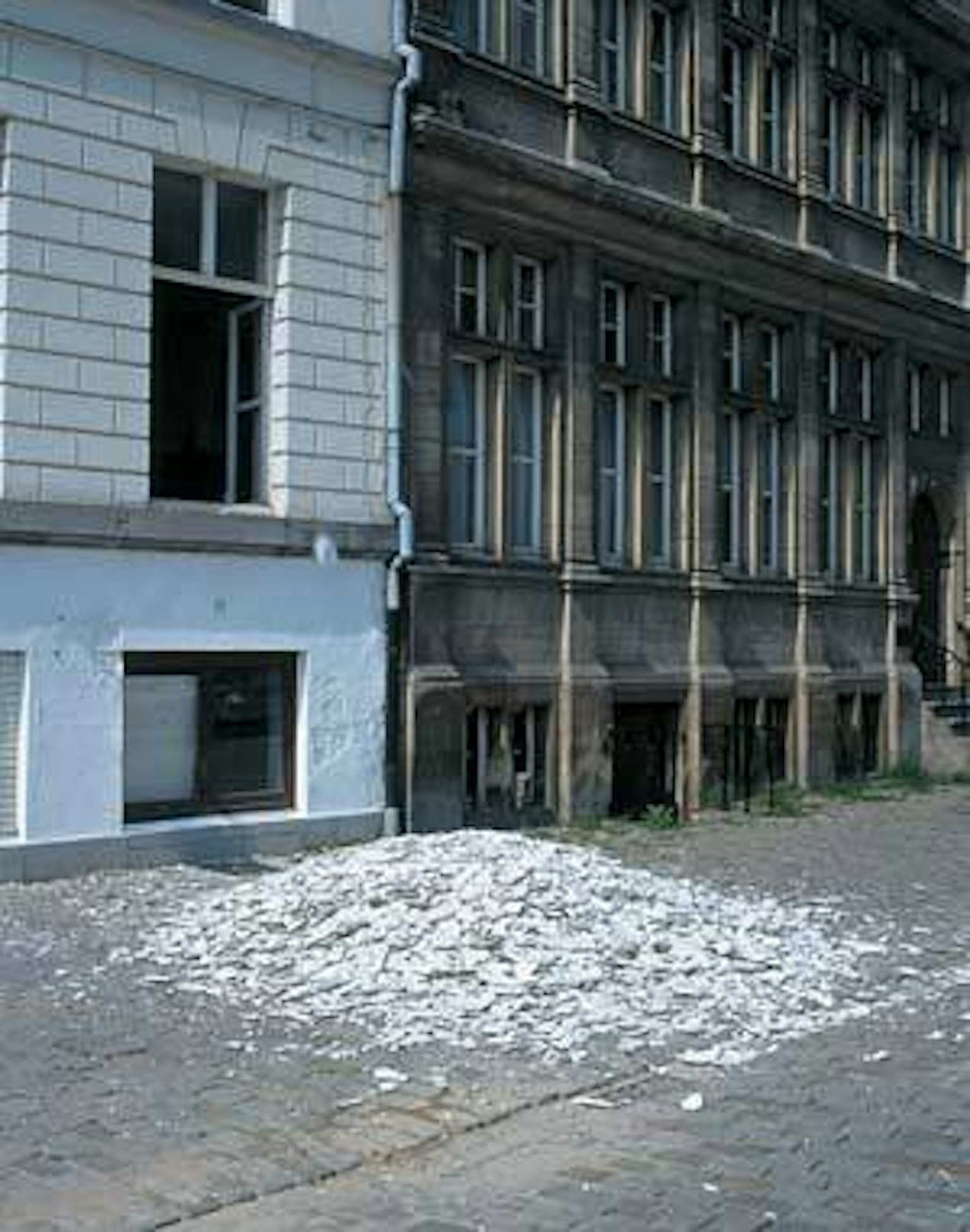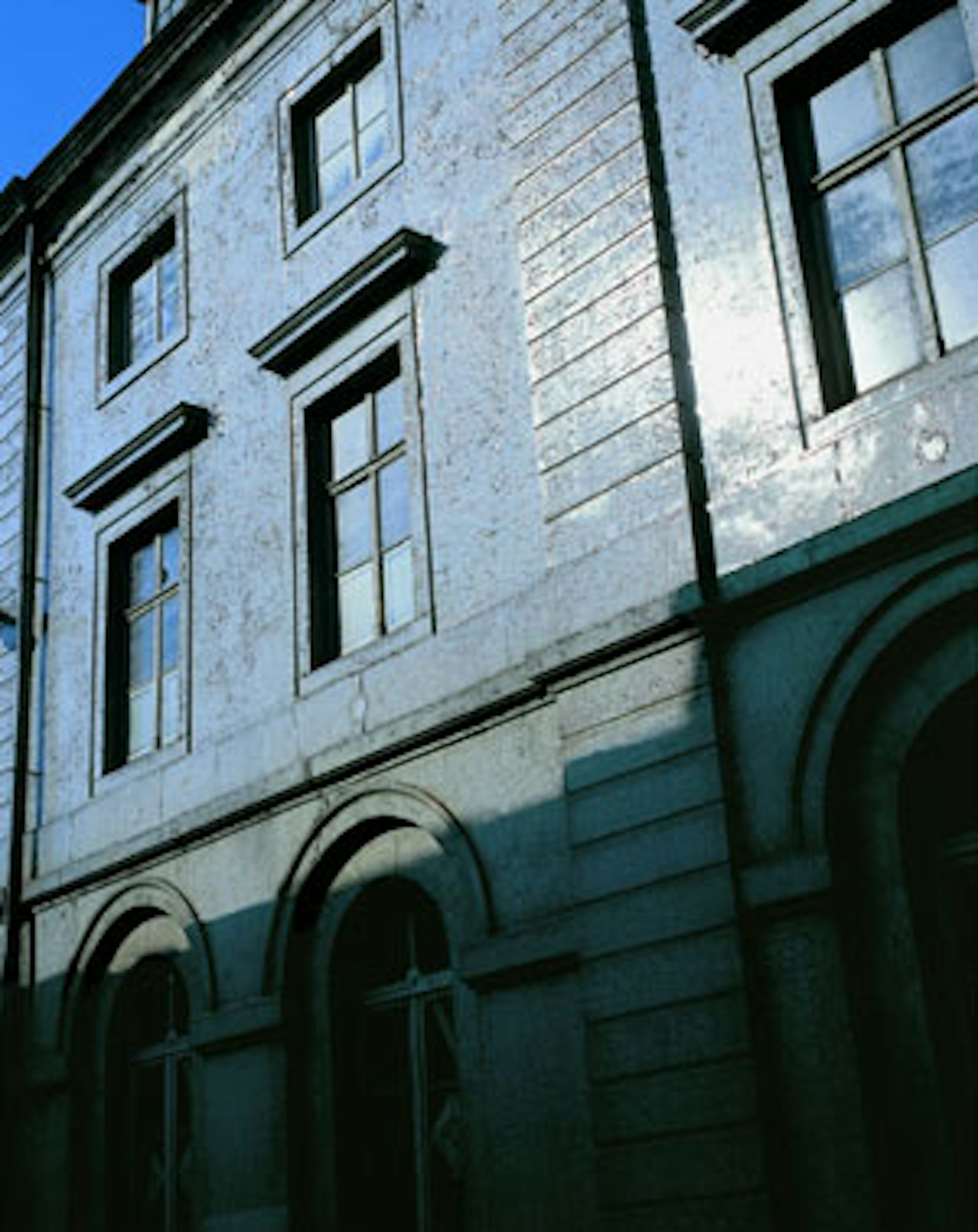Loud voices can be heard through the window of a small house in the centre of Ghent. White porcelain plates launched from the same window narrowly miss you.
As a chance passer-by you get the feeling you are witnessing a couple arguing and the heap of shards on the street makes you think the argument has been going on for weeks. In fact it is all part of a work by the French artist Patrick Lebret, one of the fifty-five artists in the ‘Over the Edges’ exhibition.The idea of an exhibition in and about the centre of Ghent took shape when, several years ago, Jan Hoet was asked to organise a contemporary event for the Charles V year.
According to Hoet and his co-curator Giacinto Di Pietrantonio, the artist should be better able than anyone to accentuate the structure and richness of a city. For example, the American artist Brian Tolle brings a façade on the Korenlei to our attention. A wall has been installed in front of the existing 16th-century façade, showing in great detail the reflection of the façade in the water. The starting point for ‘Over the Edges’ is the corner, ‘the boundary between interior and exterior, between indoors and outdoors, between private and public’. The corners are the city’s structural accents. In the old city centre, made unique by the history in its very pores, the corners of streets and houses function as reference points in the orientation of the city. So, for example, there are the highly realistic guide dogs for the blinds by the American artist Tony Matelli which indicate the direction on three corners at various points in the centre. From early April till late June, poets, musicians and fire-eaters will perform with some degree of regularity on a covered stage at the western door to the Cathedral of St Bavon. This black stage is the contribution made by the Flemish artist Thierry De Cordier. His work, the ‘Chantoir’ is on the one hand intended to challenge the visitor to take an active part in the exhibition, and on the other refers directly to the history of the location, to the time when the church was the focus of a great many economic and social functions. Giuseppe Gabellone has not based his work on a single corner, but rather the complex street pattern in which the corner is seen as the point at which several streets join together. He has transformed this pattern into a box measuring one and a half metres square. This work is shown inside a house. The way the artists handled the concept of the corner has always been entirely in their own hands; they themselves chose a location in the centre of Ghent and also had complete artistic freedom.
The artists came to Ghent in groups spread over two years to get to know it and to transform their view of the city into a contribution to the exhibition. It was not laid down in advance that the works had to be on the outside of the corner, so one will see works both inside and outside. ‘Over the Edges’ has been worked out and organised by S.M.A.K., the Museum of Contemporary Art. This relationship is also emphasised in the exhibition, for instance in the two booking and information stands, one in the city centre and one in the museum. The tickets are accompanied by a street map of the exhibition, which, as well as the locations, also provides a short description of all the works to be seen. The ticket is for admission to both all the indoor locations and the museum itself. While the exhibition is on, a room in the museum will used to display the designs, sketches and models by the artists involved. A taxi will go back and forth between the museum and the city centre. The Thai ‘taxi artist’ Navin Rawanchaikul will see to it that his contribution creates a unique connection between the city and the museum. For visitors who wish to start their tour of the works from the centre itself there is plenty of opportunity to obtain more information and buy tickets in the historical heart of the city. With his ‘Meeting Point’ project, comprising several information and meeting points, the Spanish artist Angel Vergara will be providing the route of the exhibition with a certain continuity. He has used material from the Belgian army for this. As a consequence, from April to June the city will not only be occupied by works of art, but this occupation will in a manner of speaking also be supported and reinforced by the army.




